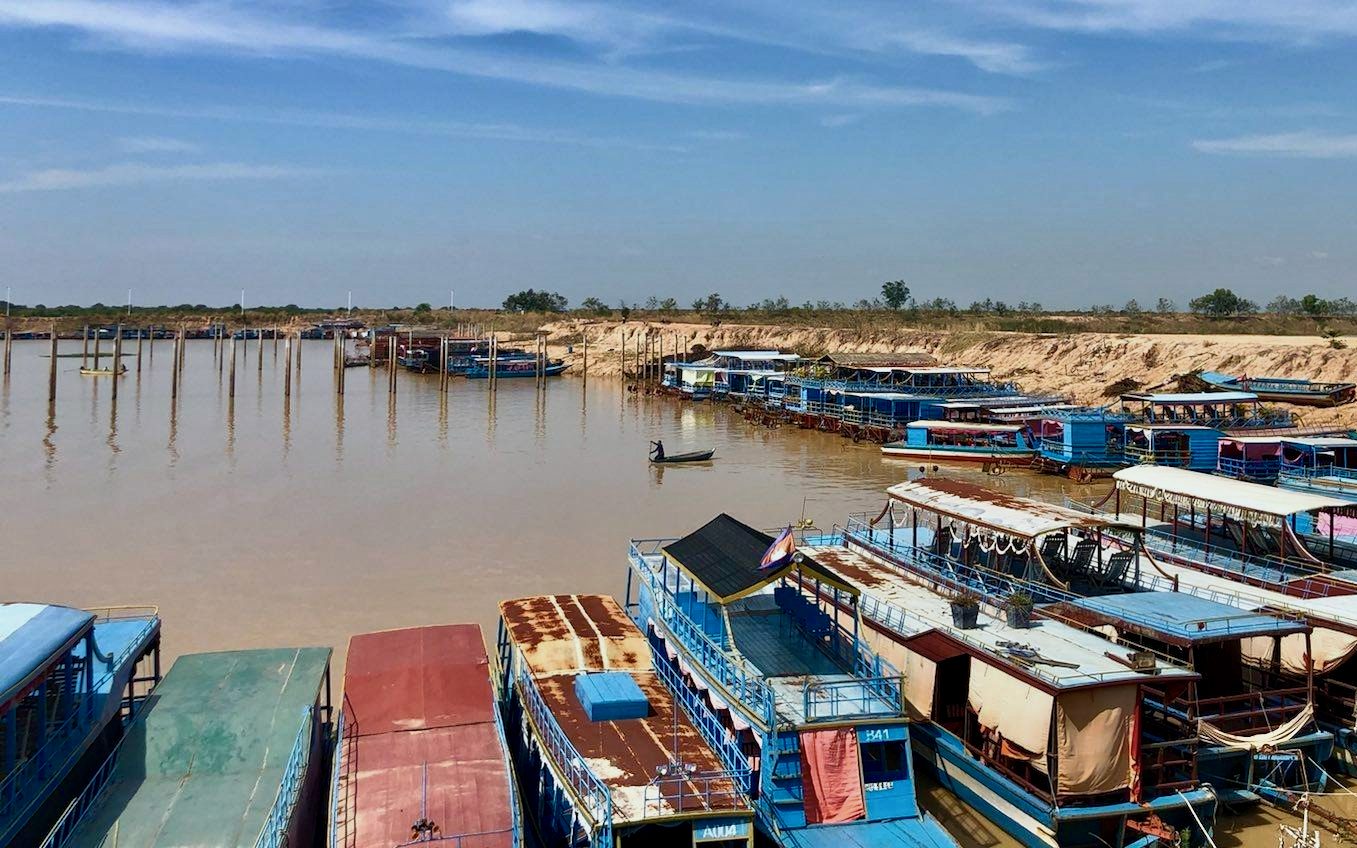Leng Chantha, 60, retired from rice-wine making about seven months ago.
For 20 years, he made rice wine in Stung Treng province — cooking rice, adding yeast, letting it lie for five nights.
Then it’s boiled in a large pot, and the steam captured to make the wine. The first batch of distilled liquor can be as strong as 90 percent alcohol, and becomes gradually weaker until it’s tasteless, Chantha says. He sold his wine at about 30-40 percent alcohol.
Sometimes he also added water and methanol, he says.
“No one has been poisoned by my wine,” Chantha says. But watering down the wine and making it strong again with cheap methanol made it profitable, he says.
He bought the methanol at Phnom Penh’s O’Russei market at about $32 for 30 liters. Vietnamese methanol is also on the market that is even cheaper, he says.
The amount he adds depends on “if they prefer a cheap rice wine to drink or good rice wine,” he says.
“Making rice wine is a long process,” he says. Fifty kilograms of rice plus a kilogram of yeast can make about 150 liters of rice wine, he says.
“Methanol can be used in different ways. Some winemakers, they just put methanol into the water and sell it. Thirty liters of methanol can be added to 60 liters of water, and that can poison people,” Chantha says.

In Kandal province, Chhum Chan says he also made rice wine for more than 20 years before becoming commune chief of Khsach Kandal district’s Koh Choram commune.
Home rice-wine manufacturing could be traced back to the end of the Khmer Rouge, and the techniques and traditions had been passed down since then, Chan says.
If it is made properly, there is no danger, he says. But it is also unprofitable. The rice cooked for making the wine is fed to pigs, and the pigs make more money than the wine, he says.
Those who make money from rice wine are taking “shortcuts,” Chan says.
“The wine that is produced through the normal cooking of rice, it will not be poisonous and it is healthy and people bought it for newly pregnant women,” he says.
One shortcut is buying “pickled” rice from Vietnam, he says. The rice isn’t cooked, but simply mixed with yeast and turned into wine. Another shortcut is adding water and methanol to make stronger wine from less rice, he says.
Some also add a small amount of insecticide for both stronger taste and effect, he says. “Placed with 5 liters of water, no one will notice and this is very dangerous.” Profits will double, he adds.
“The ones who want to gain profit, they don’t need to raise pigs” since they are mostly mixing chemicals, he says. “They just pour it and distribute it to the people.”
The recent spate of rice-wine deaths is likely a matter of people desperate to make money, he adds.
“In my analysis, this could be caused by producers who make it without following the standard and want to earn profits. Like I said, they put methanol in wine … sometimes the wine is good,” Chan says.
At least 45 people have died this year from rice wine poisonings, including a case of 11 deaths over the weekend in Kampot province. On Tuesday, Kampot announced it was shutting down all unlicensed sales of rice wine.
Chan says three people also died in his commune on Sunday after drinking too much wine, but it may have been simply too much alcohol.
“We cannot make a conclusion yet that the wine had methanol,” Chan says. The three people drank every day, often without eating, he says.
Kuoy Bunthoeun, chief of the Kandal provincial health department, says he does not have information on the case yet, but officials are investigating.
Last year, the Health Ministry said rice wine deaths between 2015 and 2018 ranged between two to 33 a year. It has said that the safe limit of methanol is 0.1 percent, but has found products with as much as 11.9 percent methanol.













